Rich in history, glamour and beauty, Capri is also the perfect size for a couple of days’ exploring. Rebecca Burgess gives her highlights of this gem of an island.
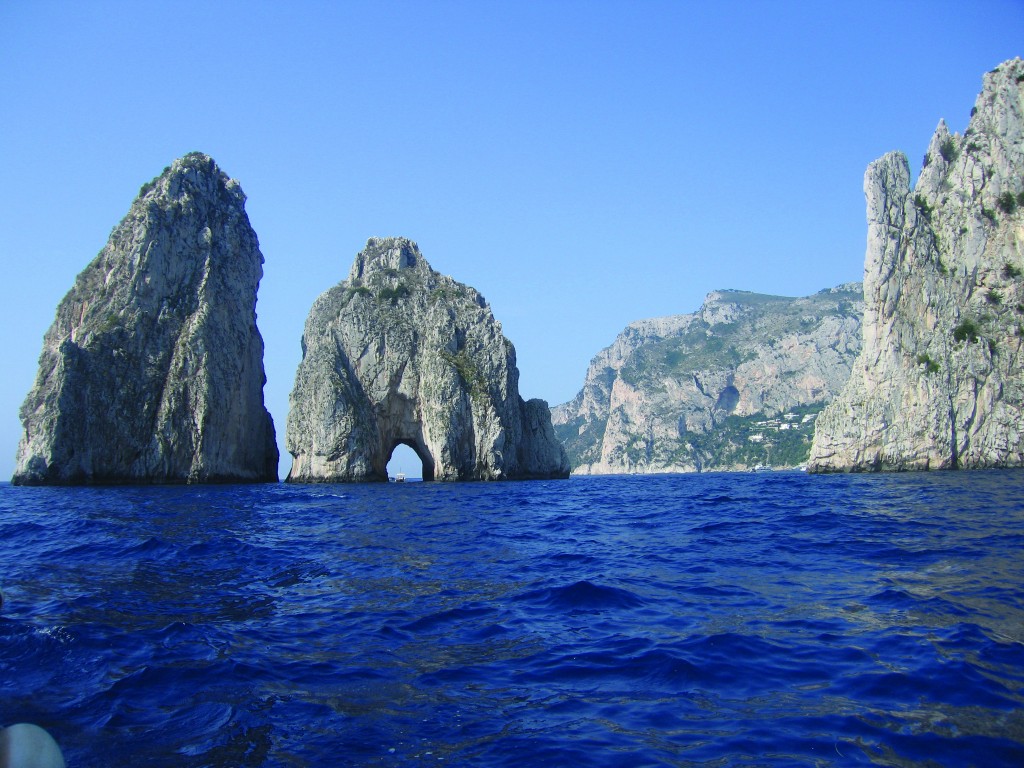
The island of Capri, rising out of the shimmering Tyrrhenian Sea, has long held an allure for some rather illustrious characters, with figures as prominent as Charles Dickens and Graham Green among those who have lauded the pleasures of this captivating destination.
“There is no spot in the world with such delightful possibilities of repose as this little isle,” eulogised Dickens. “For me there is a sense of peace and joy in Anacapri that I have never found anywhere else in the world,” decried Greene. But is there a touch of poetic licence in the outpourings of these literary grandees or is Capri really as good as all that? I decided to find out on a short weekend trip, but first I had to get there.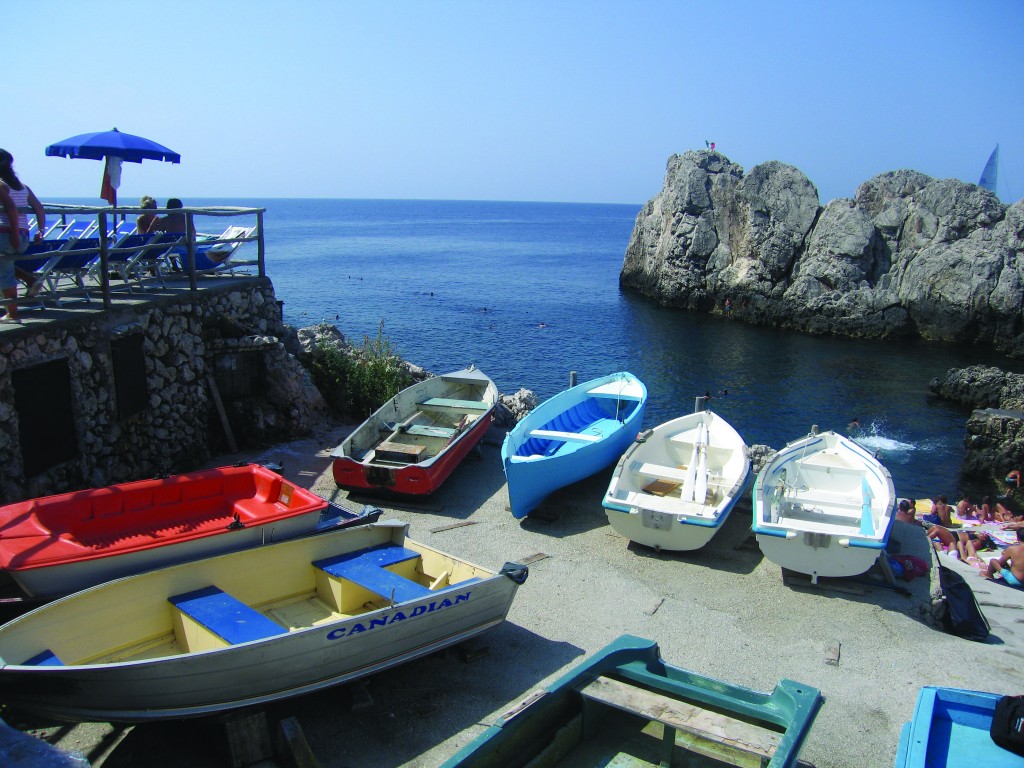
The island’s landscape is not blighted by an airport, which means that Capri is reached only by boat or helicopter. One of the most direct routes is to first travel to Naples, then take a short ferry or private transfer to the island. I was lucky enough to travel via the latter on board a private motorboat, courtesy of Capritime – a fitting start to a visit to an island renowned for its indulgences.
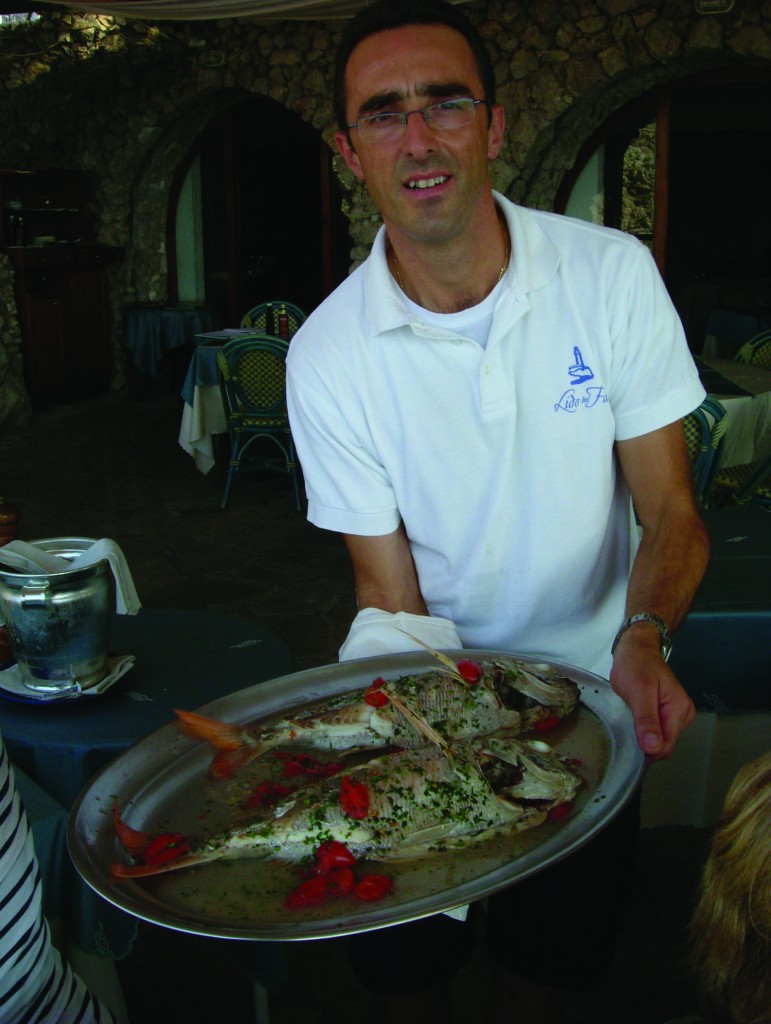
Capri is perfectly sized for a weekend’s exploring and is divided into four distinct areas: the town of Capri, Marina Grande, Marina Piccolo and Anacapri. Over 8,000 people live in the town of Capri, the central, more conspicuously touristy and wealthy area, while a further 7,000 live in Anacapri, which is quieter and more typical of the Caprese people.
Capri is served by the Marina Grande on the eastern side, where a fabulous assortment of private yachts dominates the berths and where the ferries and hydrofoils dock, and Marina Piccola on the southern side, with its beach and restaurants.
Getting around Capri is easy, particularly if you make use of all the island’s modes of transport – boats, buses and the funicular railway. The funicular, which runs from Marina Grande (where visitors arrive) to central Capri, takes only a couple of minutes and is a wonderful way to travel. In addition, orange buses scurry endlessly between the marinas, Capri and Anacapri, and although a bit of a squash at peak times, you never have to wait long for another.
Capri town
I soon discovered that while Capri’s popularity with tourists vetoes peace and quiet, it offers hours of people-watching. Hordes of day trippers, diamond-encrusted ladies shopping in the lanes and smooth men comparing the size of their yachts in the marina provide plenty of entertainment.
The best place to soak up this theatre is in the ‘Piazzetta’, also known as the Piazza Umberto I. This square in Capri’s centre sits above the Marina Grande and is the focus of a labyrinth of cobbled streets. The Piazzetta has been described as the “drawing room of the world” and is a magnet for writers, actors, artists, politicians and the international jet-set community.
The numerous outdoor tables are always full and the clothes, jewellery and hairstyles are a sight to behold. Here, weary shoppers relax after boosting the island’s economy in the designer boutiques, including Armani, Dolce & Gabbana and Prada.
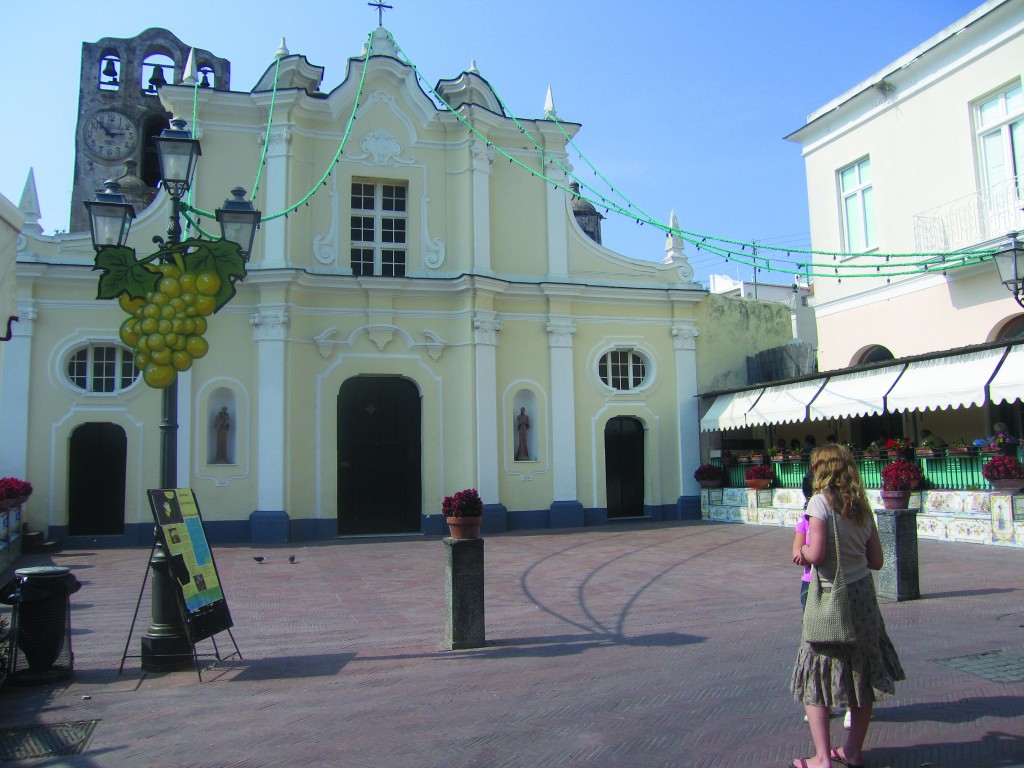
There is also a collection of first-class hotels, with more reasonably priced ones, such as the three-star Gatto Bianco, still available in the heart of Capri. The Gatto Bianco was the meeting place for the island’s rich and famous in the 1950s, including King Farouk, Clark Gable, Sofia Loren and Jacqueline Kennedy. From the hotel, it’s a short walk through the winding cobbled streets to the Gardens of Augustus on the far side of the island. The gardens are teeming with beautiful scents and flowers, but more often than not also tour parties.
A good escape is down the Via Krupp – a winding road cut into the rock in the early 1900s by the German industrialist Friedrich August Krupp. Described as one of the most panoramic roads in the world, it leads to the relative tranquillity of Marina Piccola, on the western side of Capri.
Anacapri
To experience the Capri beyond the tourists, it’s best to stay in Anacapri, or at least spend a little time exploring there. While Anacapri is also hugely popular with tourists, it is actually where the majority of people who live and work in Capri have their homes. It was here that the Swedish writer and doctor Alex Munthe chose to build Villa San Michele – an imposing residence built on the ruins of an ancient Roman villa.
A tour of the villa shows the rooms laid out as Munthe lived in them, with displays of his work and ancient Roman archaeological finds. The gardens are stunning and are worth exploring, with panoramic views of the island.
Two other must-sees are the artistic delights of Casa Rossa – literally a red house – and Chiesa di San Michele. Casa Rossa was built between 1876 and 1898 by an American colonel, JC MacKowen, and is home to a permanent collection of paintings – many depicting scenes of Capri throughout the centuries. Chiesa di San Michele, on the other hand, houses its breathtaking artwork on the floor – in the form of a shining carpet of majolica created by Leonardo Chiaiese. The church floor is covered by a vast painting, depicting Adam and Eve in the Garden of Eden, the serpent and an array of wild and domesticated animals.
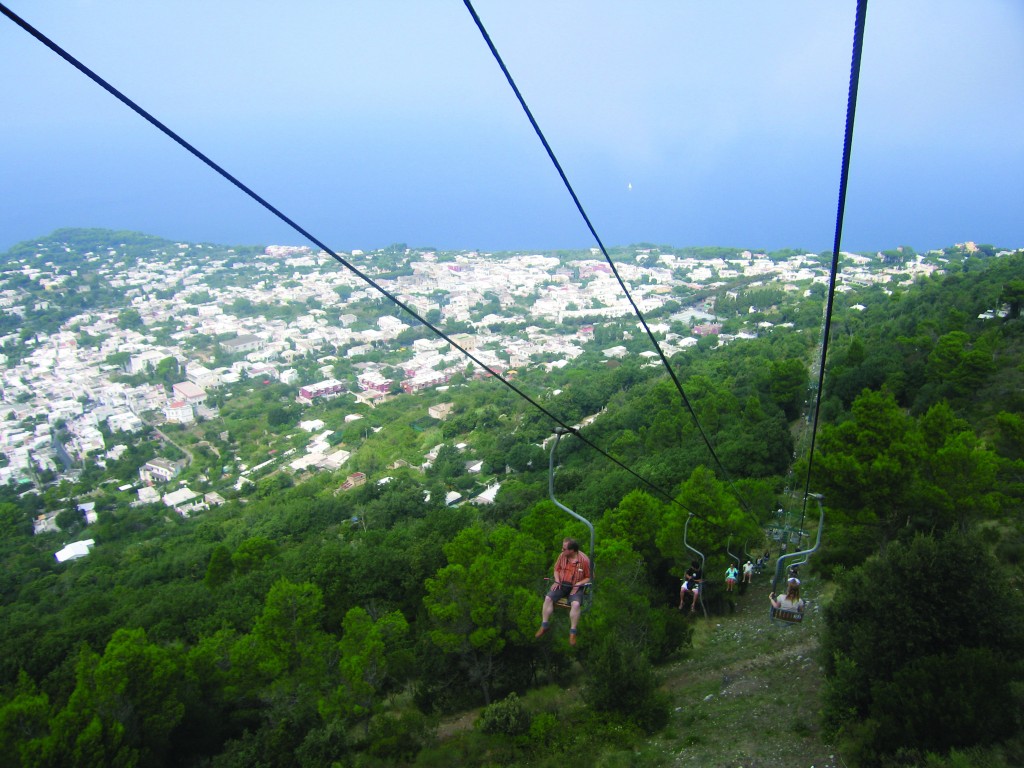
Anacapri is also home to the chairlift, which transports visitors on a ten-minute ride from Piazza Vittoria to Monte Solaro, the highest point on the island at 589 metres. At the summit there is a café and spectacular views across the island and to mainland Italy. To descend either take the chairlift and enjoy a serene downward drift into Anacapri or, if you’re feeling more energetic, try the 50-minute walk passing Santa Maria, a monastery created by 14th-century Carthusian monks.
To the sea
Being an island the call of the sea is strong on Capri. The perfect day out is a boat excursion, whether on a Caprese gozzo (a motor-powered boat with tarpaulin shade and sunbathing area), a chartered yacht or a larger tourist boat. By boat you can explore the rugged coastline, anchor for a swim in the blue seas, and investigate the beaches and restaurants.
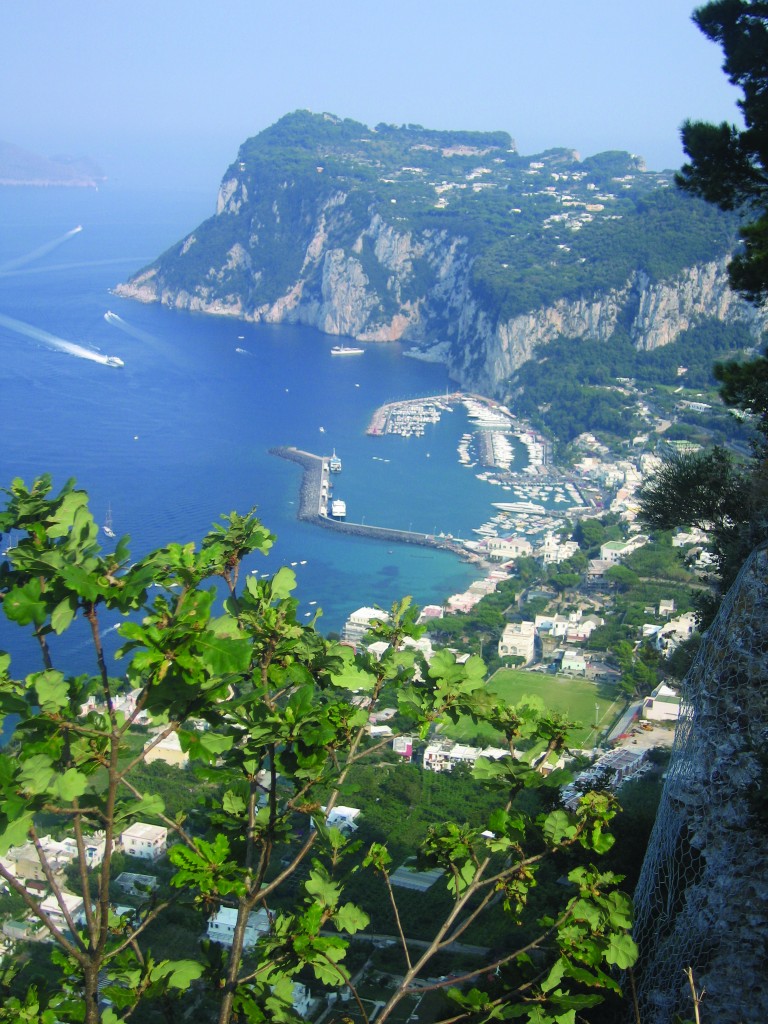
Although it’s very much on the tourist trail, no visit to Capri would be complete without a visit to the infamous Grotta Azzurra (Blue Grotto). Capri has many grottos, but the Azzurra is the island’s most famous since its rediscovery by German painter August Kopisch, in 1826. I visited the grotto as part of a day-long boat excursion with Capritime, but it’s also easily accessible by bus or on foot. Entrance to the grotto is gained through a tiny gap in the cliff face and outside the bay is filled with a flurry of rowing boats queuing to enter, manned by Capri’s expert oarsmen.
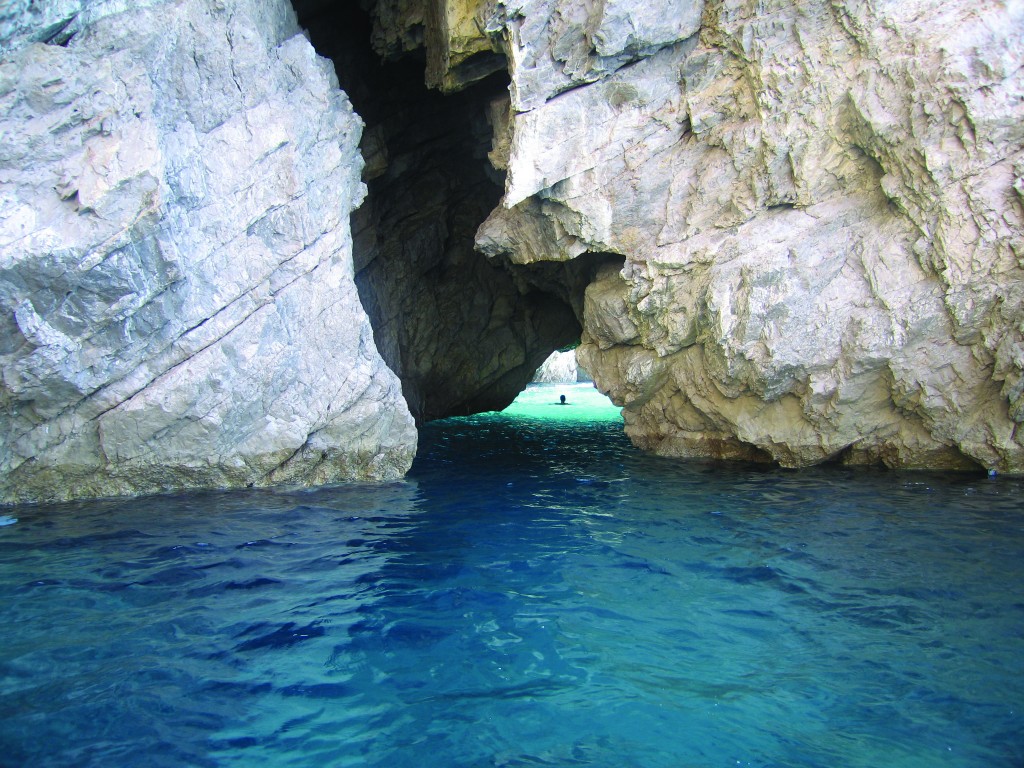
Once inside the cavern opens out into a magnificent space where the refracted light turns the water an intensely rich cobalt blue. But the Grotta Azzurra is by no means the only grotto on the island. Others include the Red Grotto, the Green Grotto, the Grotto of the Cannon – named because of its booming noise – and the Grotto of the Sea Bull, formerly home to a seal colony.
Sailing round the shore, you also come across the red home of the communist writer Curzio Malaparte and further along stand the Faraglioni – two gigantic rocks breaking out of the sea – a home to the rare Blue Lizard and commonly used as a symbol of Capri.
Then comes Marina Piccola, the island’s southern-most landing place, set in a picturesque inlet at the foot of Mount Solaro, which grew from a collection of fisherman’s cottages into an international centre of restaurants, sunbathing terraces and water sports. Here palm trees offer shade in June and July when the area is awash with the vibrant colours of oleander, hibiscus and geraniums. It is the jewel in the crown of several beaches along this shore, but you must pay a daily entrance fee to make use of sun loungers, bars and a supervised swimming area.
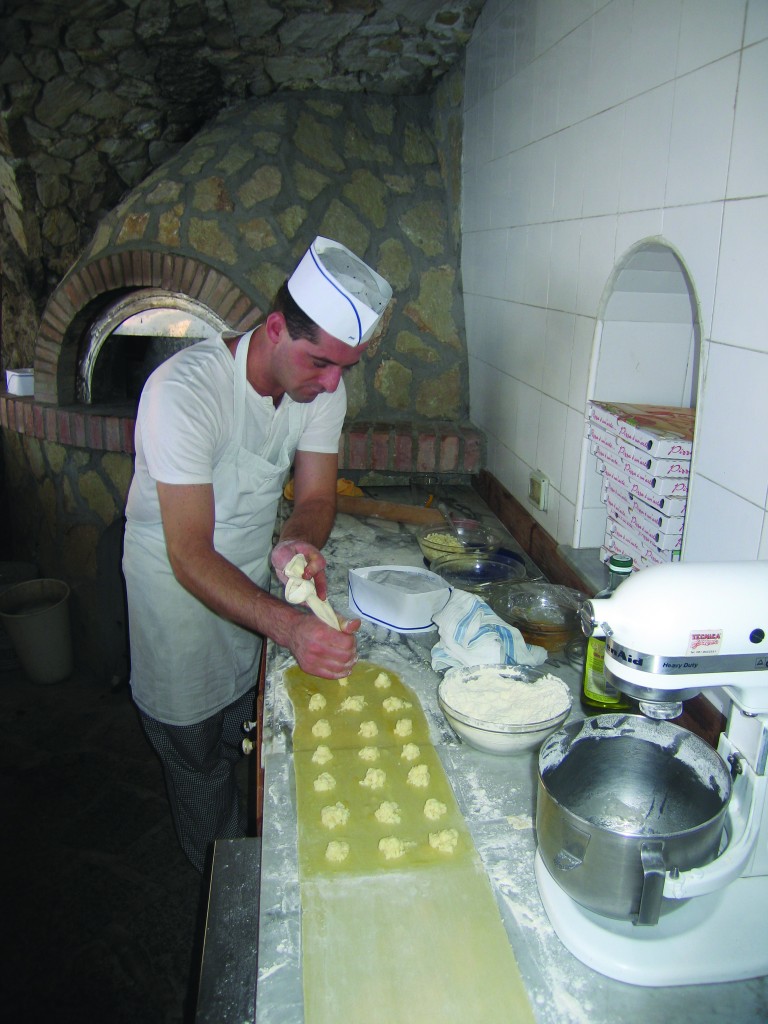 I visited Lido del Faro, a secluded bay with a fabulous restaurant, Ristorante del Faro, where we were able to take part in a cookery lesson making the island’s typical ravioli and pezzogna fish, before feasting on our endeavours. The entrance fee for this is between €10-€15 and includes a chair or lounger.
I visited Lido del Faro, a secluded bay with a fabulous restaurant, Ristorante del Faro, where we were able to take part in a cookery lesson making the island’s typical ravioli and pezzogna fish, before feasting on our endeavours. The entrance fee for this is between €10-€15 and includes a chair or lounger.
Terra firma
Back on dry land, more of the island’s delights can be discovered in its lush vegetation and botanical secrets. The tourist board has produced a fabulous book called Capri Blossoming, which describes 11 walks round the island. It was compiled by botanical expert and photographer Tullia Rizzotti, and it is advisable to buy a copy and take some time to explore on foot.
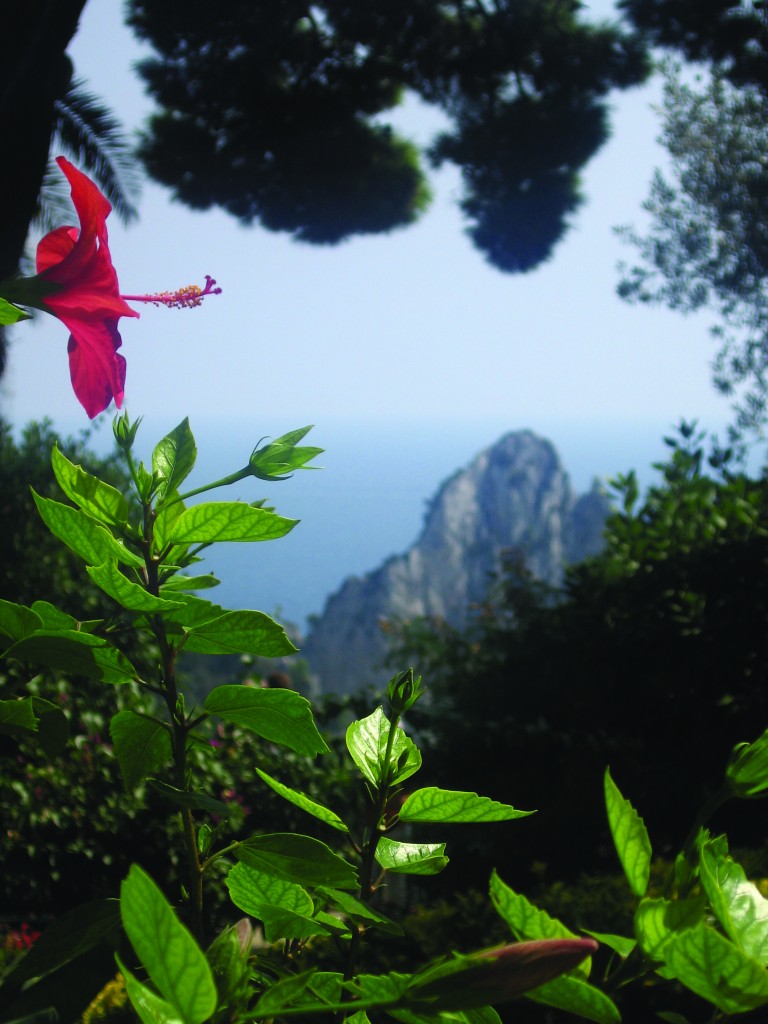
The island’s history is also extremely accessible on foot, as is the opportunity to visit Capri’s many ruins. There is evidence of inhabitation dating back 400,000 years, when the island was joined to the mainland. The island seems to have inspired strong emotions in all those who have visited or made their homes there.
The island’s grandest supporter was Roman emperor Augustus, who arrived on Capri in 29 BC. He was so taken with the place, he traded the island of Ischia to Naples, which then controlled Capri, and the Neapolitans accepted.
Later came Emperor Tiberius, who loved the island so much he transformed it into his own miniature kingdom, effectively moving the centre of power from Rome to his island home, and lived there from 26 to 37 AD.
Tiberius is said to have built 12 villas and set up his imperial residency in Villa Jovis, whose ruins can still be visited, along with those of Villa Damecuta, the ruins of which were unearthed between 1937 and 1948 and which houses a tower added during the 12th century.
The flavours
Greek and Roman influences are still visible today in another attraction of the island – its cuisine and wine. The cuisine focusses on simple dishes, principally based on fish from the surrounding seas and vegetables grown on the island. Typical dishes include baked pasta, sweet peppers and aubergines, roast rabbit and the locally caught white fish pezzogna.
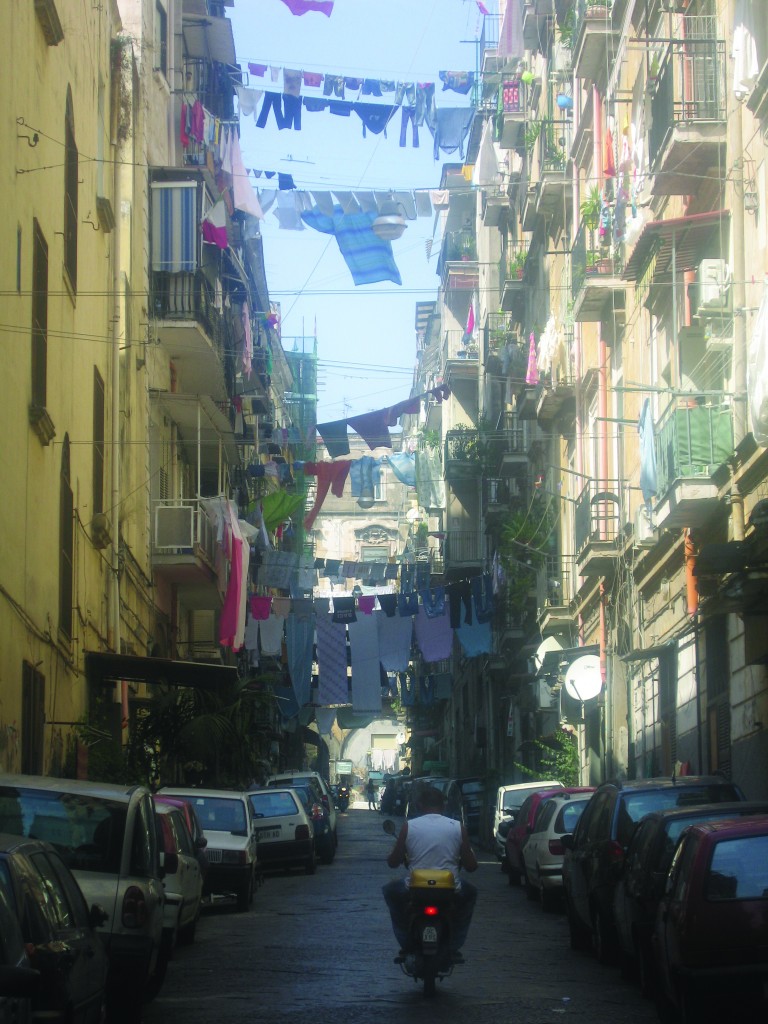
Capri also boasts its own wines. The white wine is a pale straw colour and made from Aglianico, Biancolella, Fiano and Greco grapes, while the red comes from the vineyard of Piedirosso. The Caprese wines were the claim to fame of the historic Caffè Morgano, which formed the heart of the island’s social life between the 19th and 20th centuries. There its samplers included Lenin and Graham Greene.
So, if you want to visit Capri simply to experience the high life, why not make like the famous, infamous, artistic and glamorous – take a seat among the glitterati in the Piazzetta, sip a glass of chilled wine, relax and just watch the world drift by.
